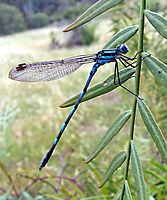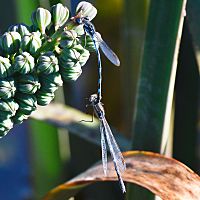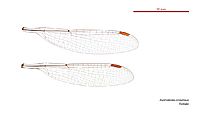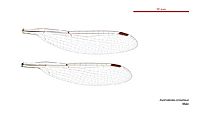Blue ringtail facts for kids
Quick facts for kids Blue ringtail |
|
|---|---|
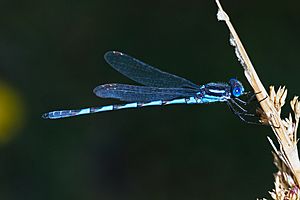 |
|
| Male, Tasmania, Australia | |
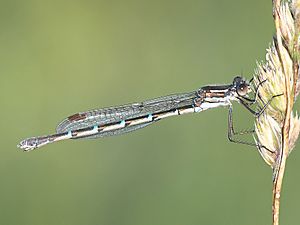 |
|
| Female, Tasmania, Australia | |
| Conservation status | |
| Scientific classification | |
 |
The blue ringtail (Austrolestes annulosus) is a cool Australian damselfly. You can find it in many parts of the country.
Contents
Who Discovered the Blue Ringtail?
A scientist named Edmond de Sélys Longchamps first described the blue ringtail in 1862. This means he was the first to officially study and name it.
What Does the Blue Ringtail Look Like?
The blue ringtail is a thin, medium-sized damselfly. Its body, called the abdomen, is about 3 cm long.
Most blue ringtails are a bright blue color. They have only a few black markings on their bodies. Their exact color can change depending on how old they are and the temperature.
Male vs. Female Blue Ringtails
It can be tricky to tell the blue ringtail apart from other damselflies. For example, it looks a bit like Coenagrion lyelli or Caliagrion billinghursti. However, you can spot the difference by looking closely at the patterns on their backs.
Female blue ringtails are a bit stronger and wider than males. They usually have black and white or pale blue colors.
Where Do Blue Ringtails Live?
The blue ringtail lives in many parts of Australia. You won't find them in the far northern or northeastern areas.
Blue Ringtail Habitat
These damselflies like to live near still water. This includes places like:
- River pools
- Lakes
- Ponds
- Even temporary pools that form after rain
You can usually see blue ringtails flying around from September to April.
Gallery



